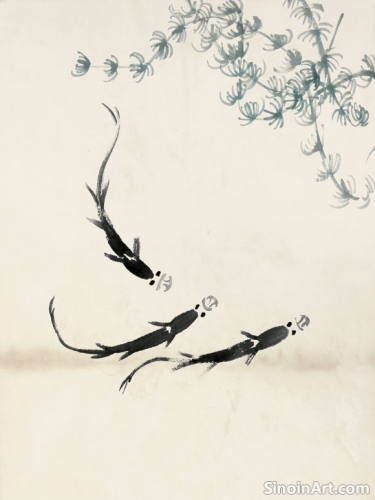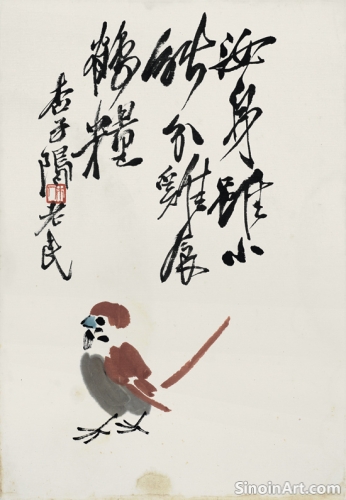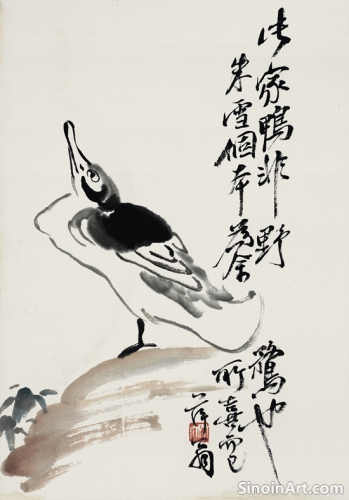The Use of "Blank Space" in Xieyi
|
"Blank Space," or liúbái (留白), is not merely the absence of ink in Xieyi painting; it is an active element, as crucial as the ink itself, contributing to the overall composition, atmosphere, and meaning of the work. It's a fundamental principle in Chinese art that extends beyond painting. The purposeful void is as important as what is actually painted.  The use of blank space creates a sense of balance and harmony, allowing the eye to rest and to move freely across the painting. It prevents the composition from becoming too crowded or overwhelming, providing essential visual breath. The balance between the painted and unpainted sections creates a visual rhythm.  Blank space also contributes to the sense of depth and distance, suggesting vastness and atmosphere. It allows the viewer's imagination to fill in the gaps, creating a sense of ambiguity and encouraging active participation in the interpretation of the artwork. It's an invitation for personal interpretation.  In Xieyi painting, blank space can be used to suggest clouds, mist, water, or the vastness of the sky. It's not always literally empty, but rather, suggests these elements and creates a sense of the intangible. The emptiness is often a vital part of creating the feeling of a space. The concept of liúbái is also connected to the Taoist philosophy of emptiness and the Buddhist concept of sunyata. It reflects the idea that emptiness is not a void but is full of potential and possibility. The blank space is considered as meaningful as the painted areas. It is full of possibility and dynamism. |
Tag : Blank space in art, Liubai, negative space, Chinese composition, void in art
Related information
- The Concept of "Baimiao" and its Relationship to Xieyi
- Xieyi Painting and the Use of "Splash Ink"
- The Concept of "Yi" in Xieyi Aesthetics
- Xieyi Painting and the Concept of "Yuan Qi"
- Xieyi Painting and the Depiction of Landscapes
"Baimiao" (plain drawing) is a foundational technique in Chinese painting, emphasizing precise line drawing to define a subject's contours and forms, influencing Xieyi by shaping its underlying structure, informing composition, and contributing to the overall control and confidence seen in the best Xieyi works.
"Splash Ink" (pōmò) is a bold and expressive Xieyi technique, involving the free and spontaneous application of ink to create large washes and evoke movement and dynamism, emphasizing the unpredictable nature of ink and water and strategically used to create balance, depth, and vitality.
"Yi" (untrammeled) is a highly valued aesthetic in Xieyi painting, referring to effortless freedom, spontaneity, a lack of artifice, and a sense of naturalness, achieved by letting go of rigid rules, allowing intuition to guide the brush, and creating artworks that are both expressive and simple.
"Yuan Qi" (original vital energy) is a core concept in Xieyi, representing the fundamental creative energy of the universe, pursued by artists aiming to capture the inner essence and inherent vitality of their subjects, requiring balance, mindfulness, and a deep connection with nature, imbuing their works with a sense of purpose and powerful intent.
Xieyi landscapes (shānshuǐ) emphasize grandeur, depth, and qi, using negative space and suggestive brushstrokes to capture the essence, atmosphere, and inner vitality of the natural world, and expressing the artist’s connection to nature and understanding of the Tao.